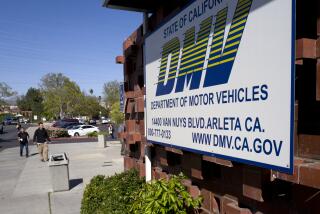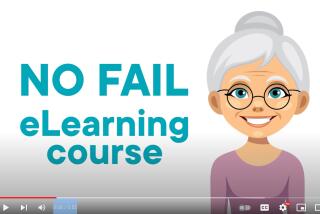Wrong way for teen drivers
California’s tough “graduated driver licensing” law has been in effect for nearly a decade. It requires that drivers under 18 carry a learner’s permit for at least six months before getting a provisional license, and that they practice driving with a parent or guardian during that period. For the first six months that they have the provisional license, teen drivers cannot drive passengers younger than 20 unless they are accompanied by a licensed driver 25 or older. Other severe restrictions apply, including rules about nighttime driving.
The law was designed to reduce the number of teen drivers killed or injured in www.aaa-calif.com%2fcorpinfo%2fguides%2fteens.aspx “>traffic accidents . Unfortunately, the latest data indicate that young people just getting their licenses are more likely to be killed in traffic crashes today than were those who started driving under the state’s old, less-restrictive licensing system.
These unexpected results suggest that the safety experts may have gotten the teen-driving issue wrong, and that in fact it is not age but greater experience behind the wheel that makes older drivers safer than younger ones.
The latest statistics from the federal Fatality Analysis Reporting System show that the traffic-death rates among California drivers ages 16 to 21 who were subjected to the 1998 teen-driver law are 8% higher than among comparable drivers who got their licenses before the law went into effect. This finding, based on figures from 1994 through 2006, factors out the state’s population changes, the 3% general increase in overall traffic-death rates and a one-year transition period after the law first applied to each age.
Is California’s teen-driver law -- the nation’s strictest and touted by safety experts as a national model -- really hazardous for the state’s teen drivers?
A study I conducted raises that possibility. Published in the National Safety Council’s Journal of Safety Research, it found, as did previous researchers, that California’s graduated licensing law was associated with fewer fatalities among 16-year-old drivers (down 20% through 2005). But that reduction was more than offset by the increased death rate -- up 24% -- of 18-year-olds, whose driving records researchers have neglected to study. The latest figures also indicate higher-than-expected fatalities among drivers aged 19, 20 and 21 who were licensed under the new law. The death rates of 17-year-olds changed little.
The stricter law appears to have split teens into three categories, none faring well. A few ignored the delays and supervision requirements specified in the new law and drove illegally, resulting in an 11% increase in deaths involving unlicensed teen drivers after the law took effect.
A second group, perhaps unable or unwilling to go through the months of supervision from parents or over-25 adults, waited until age 18 to learn to drive. From 1997 to 2006, the proportion of 16-year-olds licensed to drive fell by 20%, while that for 17-year-olds dropped by 6%. Fewer 16-year-olds driving may be the biggest reason fatalities declined for that age.
Then there were teens who dutifully complied with the law’s licensing requirements. Sixteen- and 17-year-olds driving legally under the new law experienced a 9% decline in fatalities compared with their pre-law counterparts -- but when they turned 18, their death rate jumped to 25% higher than that of 18-year-olds licensed before the law.
Increased fatality rates have persisted among drivers licensed under the graduated driving law through age 21, which are now 7% higher than among licensed 19- to 21-year-olds before the law. Evidently, supervised, delayed licensing requirements do not produce safer drivers. In fact, 18-year-olds with legal licenses under the new law suffered the worst fatality increases when driving alone (up 42%) and with teenage passengers (up 38%). These are exactly the types of driving experience the graduated licensing law most restricted them from acquiring when they were 16 and 17.
Before the graduated licensing law was adopted, California’s teens learned to drive in a variety of ways. Some learned from their parents, some from older relatives, others from peers and still others from professional instructors -- that is, in ways tailored to their different personalities and situations. These more flexible, informal family approaches, including allowing peers and relatives under age 25 to train new drivers, appeared to have been working well to serve millions of teens’ wide-ranging circumstances. In the decade before the 1998 law took effect, the death rates of teen drivers had fallen by 48%, and their injury rates by 40%, reaching record lows by 1997.
That raises a question: Why was a new licensing law imposing arbitrary, one-size-fits-all mandates needed?
True, reports from the U.S. Department of Transportation’s National Household Travel Survey and the Fatality Analysis Reporting System indicate that, on average, 16-year-old drivers (the most hazardous age for teens) suffer one fatal crash per 6 million miles driven, compared with one every 50 million miles for 50-year-old drivers (the safest adult age).
This sounds bad, but what does it mean in practice? A typical 16-year-old who drove from Los Angeles to San Francisco and back 100 times (760 miles per round trip) would be involved in one injury-causing accident. It would take 8,000 L.A.-to-San Francisco circuits (taking around half a century) before the odds would favor the teen suffering a crash causing a fatality.
You won’t find this perspective in the media or in expert reports on teen drivers. In the dozens of news articles on teenage driving that I have reviewed, young people were variously labeled as “reckless,” “stupid,” “irrational,” “crazy” and even “alien.”
However, you can verify the driving safety of 16-year-olds yourself: Look around and notice how many people live, healthy and intact, to age 17 and older. Then notice how the few who die young are not a random sample of all teens but are heavily concentrated in poorer populations in which adults also display high risks because they drive older vehicles on more hazardous roads and receive poor emergency care.
The statistics suggest that policies that prevent teenagers from gaining realistic, on-the-road practice at young ages simply transfer the danger to older ages. Thus, stronger efforts to force teens and parents to comply with the state’s graduated licensing law will not yield safer drivers. Instead, it’s time to rethink the assumptions of the law in a less condescending fashion and analyze what licensing provisions best promote safety among drivers of all ages.

